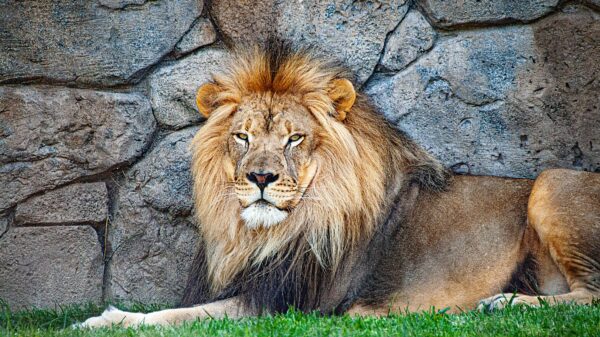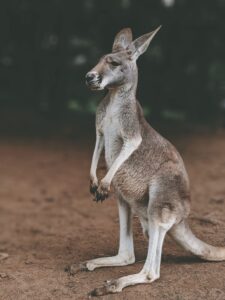Are you fascinated with the diversity of life that surrounds us? From majestic elephants to tiny ants, every creature has a unique and intriguing social dynamic. Animal communities are fascinating to study, revealing insights into communication, cooperation, and even conflict resolution strategies. In this blog post, we will explore the complex social structures of some of our favorite animals and learn how they thrive in their respective communities. Get ready for an exciting journey through the animal kingdom!
A Definition of Animal Communities
Animal communities are groups of different species that interact with each other. These interactions can be harmful, helpful, or neutral. For example, a community of lions and zebra will have different interactions than a community of ants and termites.
Animal communities can be found in nearly every ecosystem on Earth. They play important roles in the food web and help to maintain balance in the environment.
Types of Animal Communities
An animal community is a group of different species of animals that interact with each other. There are three main types of animal communities:
1. Predator-Prey Communities
In a predator-prey relationship, one animal (the predator) hunt and kill another animal (the prey) for food. This interaction between predators and prey helps to keep the populations of both animals in check.
2. Scavenger-Decomposer Communities
Scavengers are animals that feed on the carcasses of other animals, while decomposers are organisms that break down dead organic matter. These two groups play an important role in recycling nutrients back into the ecosystem.
3. Mutualistic Communities
Mutualism is a type of symbiotic relationship where both species involved benefit from the interaction. One example of mutualism is the relationship between bees and flowers; bees collect nectar from flowers, while flowers provide bees with a place to rest and pollen to eat.
Elephants in the Wild: The Social Structure
In the wild, elephants live in complex social communities. Their social structure is characterized by close family bonds and strong social ties between groups. Elephants have a high degree of intelligence and are capable of emotions such as empathy and compassion. They are also able to communicate using a variety of vocalizations and body language.
Elephants form close bonds with their family members and other members of their social group. These bonds are essential for their survival in the wild. Elephants rely on each other for protection from predators, assistance in finding food and water, and social support. The strong social ties between elephants help them to survive and prosper in their natural habitat.
Termites & Ants: Their Colony System
Termites and ants both belong to the order of insects known as eusocial creatures, meaning they live in communities where individuals cooperate to care for young and divide labor. One fascinating aspect of their society is the way they build and maintain their homes, called colonies.
Both termites and ants construct their nests by chewing up wood or other materials and using it to build walls and roofs. The inside of the nest is divided into chambers that serve different purposes, such as storage or raising young. The colony also has a network of tunnels that allow the insects to travel from one part of the nest to another.
Termites and ants also have different ways of populating their colonies. Termites mate only once and the female keeps her eggs inside her body until they hatch. She then cares for the young termites until they are old enough to start working on their own. Ants, on the other hand, mate multiple times and the females deposit their eggs in a chamber within the colony. The larvae are then cared for by worker ants until they reach adulthood.
Both termites and ants rely on communication to maintain their colonies. They use pheromones, chemical signals that allow them to share information about danger or food sources. They also touch each other with their antennae as a way of exchanging information.
Bats: The Flight to Roost

Bats are among the most interesting and mysterious of animals. For example, did you know that bats are the only mammals capable of true flight? Or that there are more than 1,200 species of bat, making them one of the most diverse groups of mammals on the planet?
But there’s one thing about bats that is perhaps even more fascinating than their unique physical abilities or diversity: their social behavior. In particular, the way in which they roost.
Bats typically roost in caves or trees, but they will also use man-made structures such as bridges and buildings. And while some bat species roost alone or in small groups, others form huge colonies that can number in the hundreds of thousands!
So why do bats roost in such large numbers? There are a few theories. One is that it provides protection from predators. Another is that it helps them to stay warm in cooler weather. But perhaps the most likely explanation is that it simply makes finding a mate easier!
Whatever the reason, one thing is for sure: watching bats take to the skies at dusk is an unforgettable experience. So if you ever get the chance to see it for yourself, don’t miss it!
Penguins and Seals: Working Together for Survival
Penguins and seals are two animals that have a symbiotic relationship. The penguins eat small fish and krill, while the seals eat larger prey. This relationship benefits both species because it allows them to share resources and reduce competition.
Penguins live in colonies of up to several thousand individuals. They huddle together for warmth and to protect themselves from predators. Seals often rest on the ice near penguin colonies. This provides the seals with access to a food source, and it helps them stay cool in the sun.
The relationship between penguins and seals is an example of mutualism, which is a type of symbiosis. Mutualism is a close association between two species in which both species benefit from the association.
Wolves and Wild Dogs: An Intense Bond
In the world of animal communities, there are many fascinating bonds that exist between creatures. One such bond is the intense relationship between wolves and wild dogs.
While wolf packs typically consist of family members, wild dogs are often more loose-knit, consisting of related and unrelated individuals. However, what these two groups have in common is a strong social hierarchy and an intense loyalty to their pack mates.

Wild dogs will often hunt in pairs or small groups, with each individual working together to take down prey. Wolves, on the other hand, typically hunt in larger packs and utilize different strategies to divide and conquer their prey. However, both groups rely heavily on teamwork and communication in order to be successful.
What’s even more interesting is that wolf/dog hybrids (known as “direwolves”) have been known to exist in the wild. These rare animals are thought to be the result of a cross between a wolf and a wild dog, and they exhibit characteristics of both species. Direwolves are typically larger than both wolves and dogs, with longer legs and a more robust build. They also tend to be more aggressive than either parent species, making them a force to be reckoned with in the animal kingdom.
Human Impact on Animal Communities
Humans have had a profound impact on animal communities around the world. We have drastically changed the landscape through deforestation, agriculture, and urbanization. This has led to the loss of habitat for many animals, as well as increased competition for resources.
In some cases, humans have also directly interfere with animal communities. For example, we have hunted many species to extinction, including the passenger pigeon and the great auk. We have also introduced non-native species into new environments, which can disrupt the balance of an ecosystem. These species can compete with native animals for food and shelter, and sometimes spread disease.
Our impact on animal communities is often negative, but there are ways we can make a positive difference. By conserving habitat and protecting endangered species, we can help restore balance to ecosystems around the globe.
Conclusion
We hope this article has helped you develop a greater appreciation of the intricate and fascinatingly diverse animal communities around us. From awe-inspiring elephants to small but mighty ants, there’s an incredible amount of diversity in our world – it’s just up to us to take the time to explore and admire it all! Whether you are heading outdoors for your next nature adventure or relaxing at home studying books about animals, don’t forget how amazing these creatures truly are.







